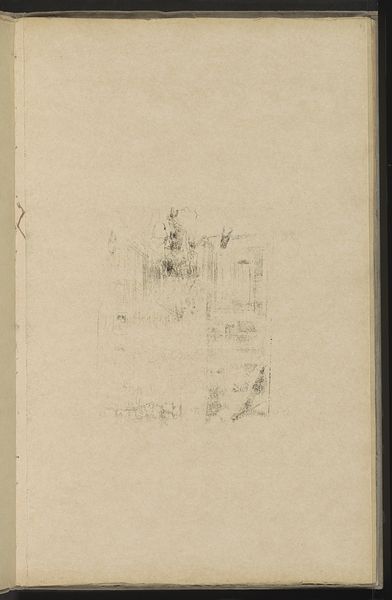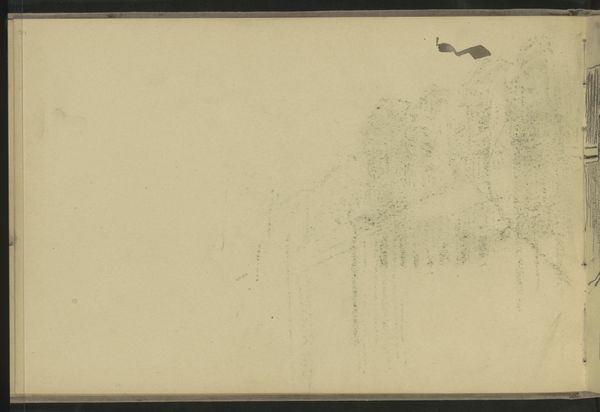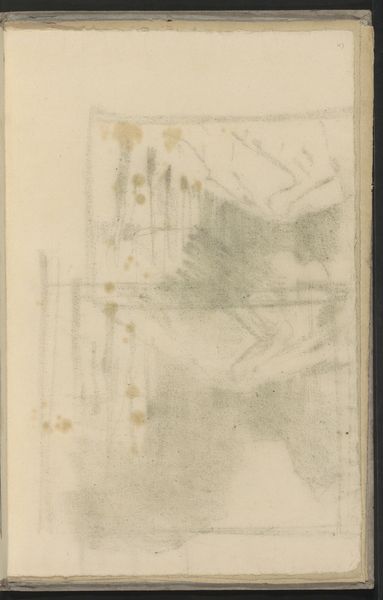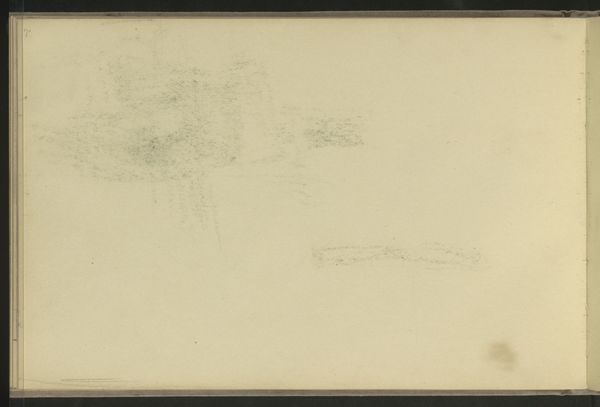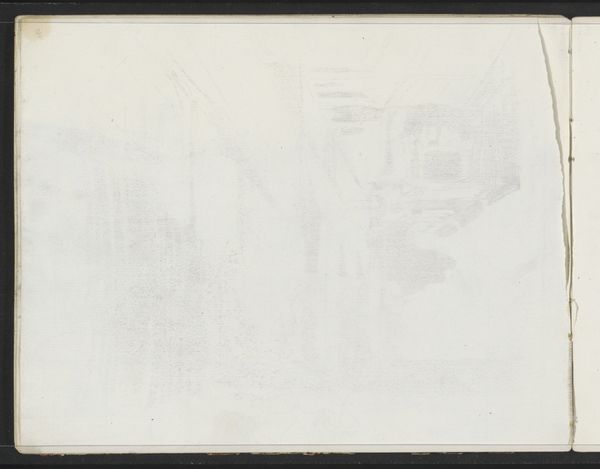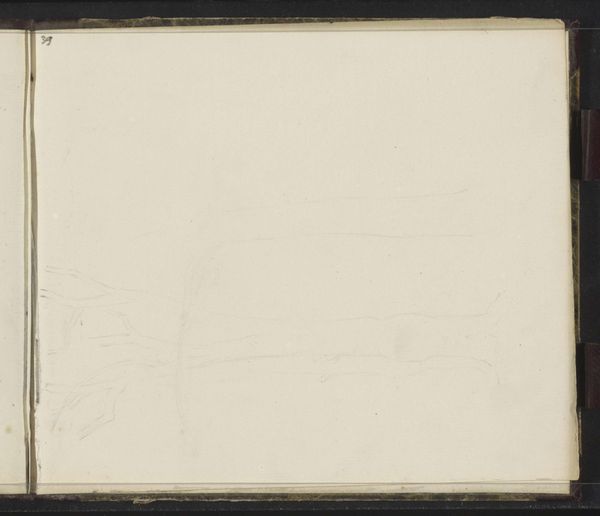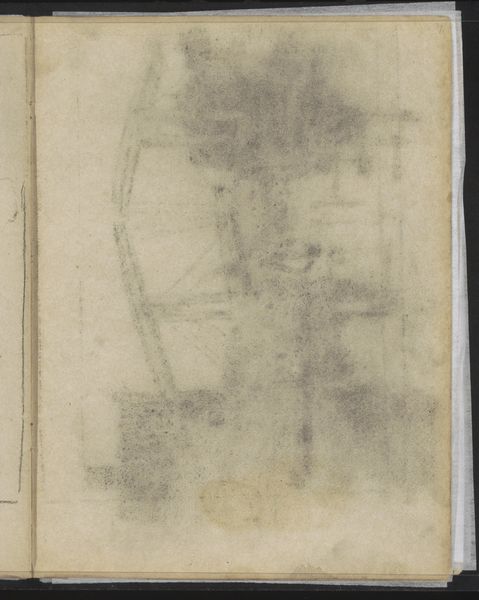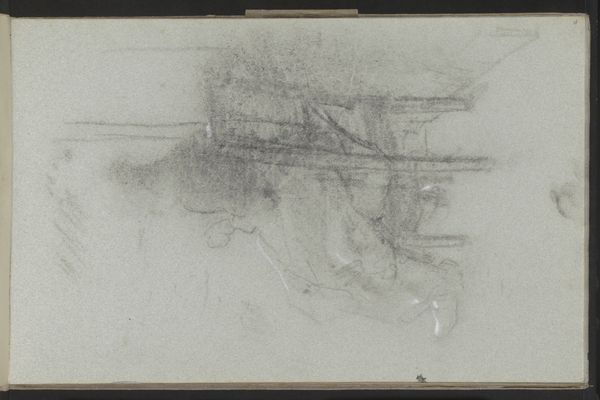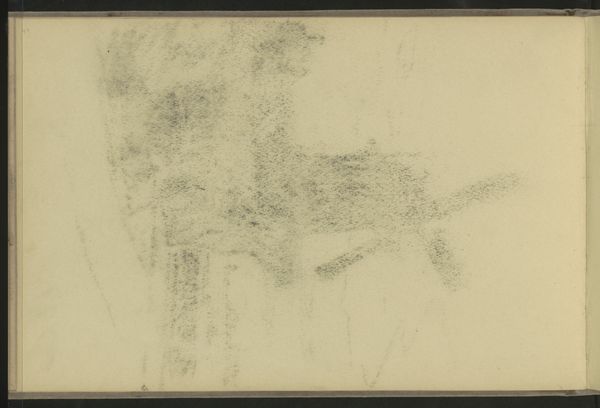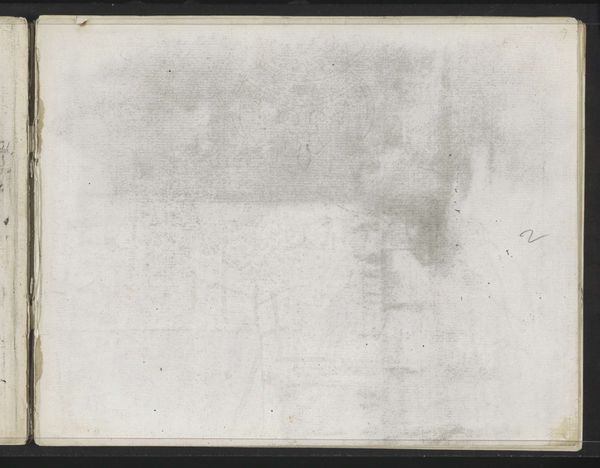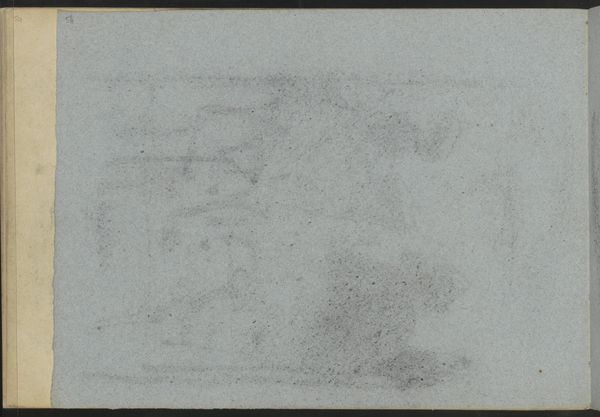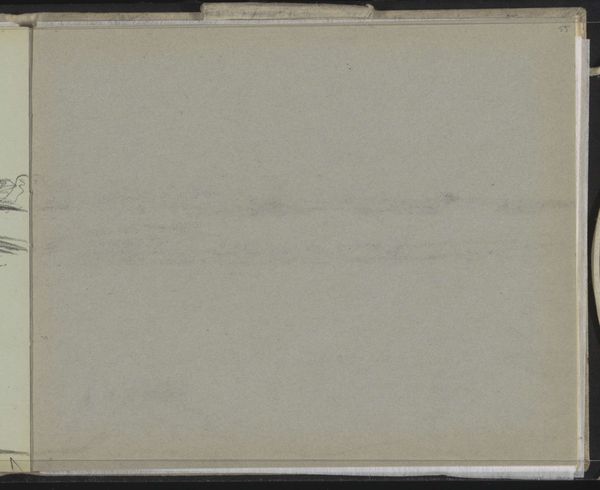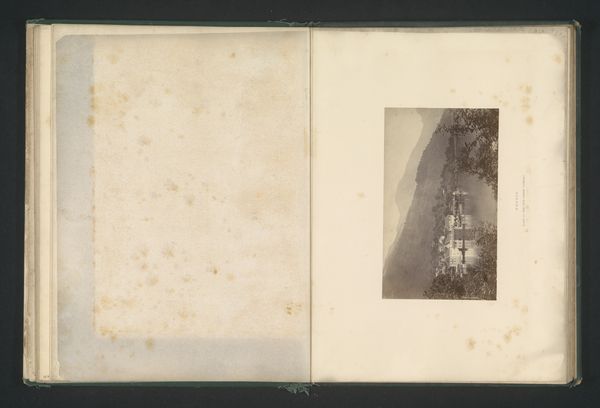
#
amateur sketch
#
aged paper
#
sketch book
#
incomplete sketchy
#
hand drawn type
#
personal sketchbook
#
sketchwork
#
pen-ink sketch
#
sketchbook drawing
#
sketchbook art
Copyright: Rijks Museum: Open Domain
Curator: This is "Abklatsch van de krijttekening op pagina 45," possibly created between 1906 and 1909 by Willem Witsen. It’s currently held in the Rijksmuseum. My initial impression is of aged paper and tentative marks. Editor: There’s a quiet intimacy to this page; a kind of glimpse into the artist's raw process. We’re seeing the mechanics of creation here, a sketch that wasn’t meant for public consumption, just raw observation and working material. Curator: Indeed. These sketches offer insight into Witsen’s working methods. Considering it's part of a sketchbook, it underscores the labor of art-making. It shows the constant process of observing, recording, and refining. What kind of visual references were available to him and other artists? How accessible and affordable were quality sketchbooks? Editor: Good point. The fact that it’s in a sketchbook situates this as personal and private; a document of the artist's private world but, it is available to the public now and becomes part of the Rijksmuseum collection, an institution shaped by specific social values and funding. This changes how we engage with this ‘amateur’ sketch as ‘art’. Curator: Exactly! Its presentation in a museum elevates the mundane, transforming it into an object of study. Think about who gets to decide what constitutes “art” worthy of preservation and display. Was there public consensus? What type of cultural agenda shapes such choices? The historical role of the museum has a lot of power to change perception. Editor: Absolutely, the display cases themselves affect how we perceive it as an object but more than that, think about who gets to engage with such "elite" forms of art like those held in The Rijksmuseum, versus how much harder it is for others to make a living selling such art or simply learning to make art from their cultural perspectives. The structures can sometimes create disparity or be tools to fight them. Curator: A powerful thought. This seemingly simple sketchbook page becomes a nexus of artistic process, social context, and institutional influence. Editor: Precisely. Looking at this piece, one is reminded that artistic creation is rarely a solitary act, but always exists within broader cultural and political frameworks.
Comments
No comments
Be the first to comment and join the conversation on the ultimate creative platform.
